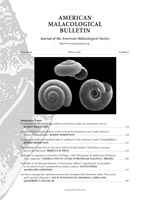Previously-published mate-choice experiments have uncovered significant prezygotic reproductive isolation between South Carolina populations of Physa acuta (Draparnaud, 1805) and P. pomilia (Conrad, 1834). Here we report the results of similar tests returning no evidence of such barriers between an Alabama population of P. pomilia and three separate populations of P. acuta, two from Alabama and one from South Carolina. However, heterogametic copulations did demonstrate both a significant sex bias and a significant size bias. The smaller P. acuta was more likely to copulate in the male role and hence less exposed to any potential fitness decrements due to the reduced viability and sterility of the hybrids produced. Our observations on defeated mating attempts suggested that P. acuta may be more aggressive than Alabama P. pomilia in mating contests (its smaller size perhaps contributing to greater agility) and hence more likely to prevail in the male role. The absence of a sex bias in our previously-published mate-choice observations involving South Carolina P. pomilia and P. acuta may be attributable to our use of size-matched snails, which equalized the agility of the prospective copulants, thus perhaps prolonging the mating contests, and ultimately lessening the likelihood that any mating took place at all.
How to translate text using browser tools
1 June 2012
Sex Bias in Interspecific Copulation between the Hermaphroditic Freshwater Snails, Physa acuta and P. pomilia (Physidae)
Amy R. Wethington,
Deborah L. Kirkland,
Robert T. Dillon
ACCESS THE FULL ARTICLE

American Malacological Bulletin
Vol. 30 • No. 2
July 2012
Vol. 30 • No. 2
July 2012
gender conflict
mate-choice tests
pulmonate gastropods
reinforcement
sexual isolation




